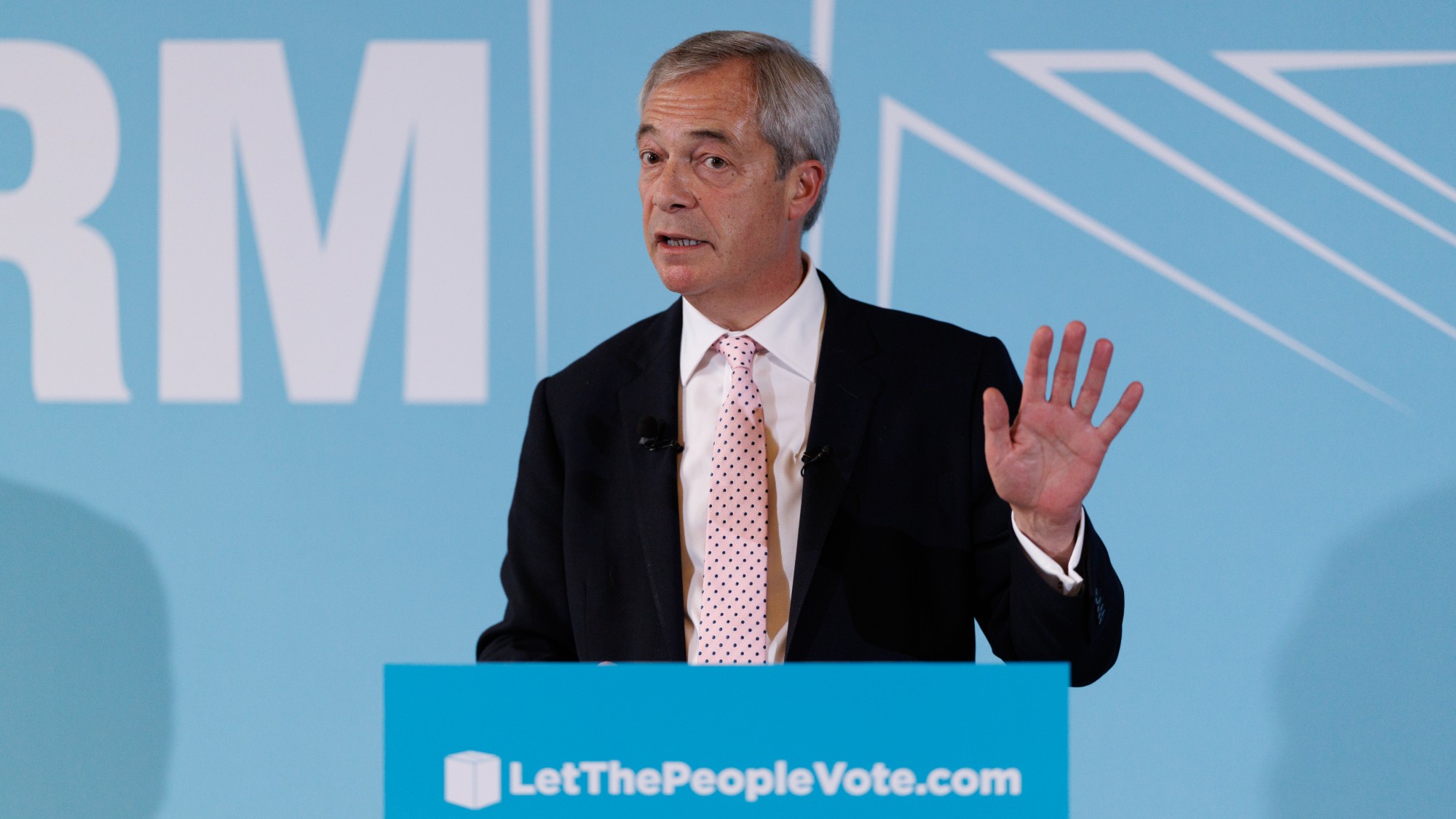The Trump administration’s plans to dismantle the Department of Education
The president aims to fulfill his promise to get rid of the agency


As the Trump administration sets its plans in motion to reallocate the responsibilities of the Education Department, the initial steps are illuminating how President Donald Trump could fulfill his campaign pledge to bulldoze the department entirely. Education Secretary Linda McMahon has launched a public campaign to argue that states and other federal agencies could better handle the department’s work.
How does the administration plan to break up the department?
American schools are funded mainly by state and local money. Still, the Education Department “serves as a conduit for billions of dollars of federal aid going to state and local education agencies,” said The Associated Press. Agency officials said the money will continue to be distributed as outlined by Congress, but under the newly signed agreements, much of it will come from a different agency.
The Department of Labor will take over some of the largest federal funding sources for schools and colleges, including Title I money for schools serving low-income communities. Adult education programs were already moved to Labor in June. Another agreement puts the Health and Human Services in charge of a grant program for parents attending college. The State Department will oversee foreign language programs, and the Interior will take on programs supporting Native American education.
The Week
Escape your echo chamber. Get the facts behind the news, plus analysis from multiple perspectives.

Sign up for The Week's Free Newsletters
From our morning news briefing to a weekly Good News Newsletter, get the best of The Week delivered directly to your inbox.
From our morning news briefing to a weekly Good News Newsletter, get the best of The Week delivered directly to your inbox.
Some of the department's roles remain unchanged, such as managing the $1.6 trillion federal student loan portfolio. While student aid is unaffected, both McMahon and Trump have suggested a different federal department could better handle it. Pell Grants and federal loans will continue to be disbursed, and student loan borrowers will continue making payments. The Department of Education will also continue to oversee the accreditation process, which allows colleges to accept federal financial aid.
Money for providing educational support for students with disabilities will continue to come from the department as well. However, McMahon has suggested it could be transferred to the Department of Health and Human Services. Investigations into schools and universities that have violated disability rights law and civil rights violations will also remain untouched, though McMahon has pointed out that the Department of Justice could take those over.
Is this the end of the Department of Education?
Not necessarily. McMahon has acknowledged that “only Congress can eliminate the department,” but she has “vowed to work to dismantle it from within,” said The Washington Post. The Trump administration is “taking bold action to break up the federal education bureaucracy and return education to the states,” McMahon said in a statement. “Cutting through layers of red tape in Washington is one essential piece of our final mission.”
Shifting the responsibilities of the department to other agencies “will not by itself remove red tape or alter the power that Washington exerts over states and school districts,” said the Post. States and school boards already control most decisions related to education, but the department “enforces rules embedded in federal programs, such as grant requirements.”
A free daily email with the biggest news stories of the day – and the best features from TheWeek.com
The proposed disbanding of the department has elicited pushback from education experts and politicians. It is “difficult to see how transferring cornerstone programs” out of the department will “result in streamlined operations, especially for the nation’s small, rural and low-capacity districts,” said David Schuler, executive director of AASA, the School Superintendents Association, in a statement.
The administration is acting as if the constitutional separation of powers is a “mere suggestion,” said Sen. Patty Murray (D-Wash.) in a statement. This is an “outright illegal effort to continue dismantling the Department of Education.” Students and families will “suffer the consequences as key programs that help students learn to read or that strengthen ties between schools and families are spun off to agencies with little to no relevant expertise.”
Others praised the administration’s decision to move forward with its plans to try to shut down the department. The shutdown of the federal government “made one thing clear: Students and teachers can go to class without heavy-handed federal intervention,” said House Education and Workforce Chair Tim Walberg (R-Mich.) in a statement, per Politico. The administration is “making good on its promise to fix the nation’s broken system by right-sizing the Department of Education to improve student outcomes.”
Theara Coleman has worked as a staff writer at The Week since September 2022. She frequently writes about technology, education, literature and general news. She was previously a contributing writer and assistant editor at Honeysuckle Magazine, where she covered racial politics and cannabis industry news.
-
 Political cartoons for December 13
Political cartoons for December 13Cartoons Saturday's political cartoons include saving healthcare, the affordability crisis, and more
-
 Farage’s £9m windfall: will it smooth his path to power?
Farage’s £9m windfall: will it smooth his path to power?In Depth The record donation has come amidst rumours of collaboration with the Conservatives and allegations of racism in Farage's school days
-
 The issue dividing Israel: ultra-Orthodox draft dodgers
The issue dividing Israel: ultra-Orthodox draft dodgersIn the Spotlight A new bill has solidified the community’s ‘draft evasion’ stance, with this issue becoming the country’s ‘greatest internal security threat’
-
 How will new V level qualifications work?
How will new V level qualifications work?The Explainer Government proposals aim to ‘streamline’ post-GCSE education options
-
 England’s ‘dysfunctional’ children’s care system
England’s ‘dysfunctional’ children’s care systemIn the Spotlight A new report reveals that protection of youngsters in care in England is failing in a profit-chasing sector
-
 Send reforms: government's battle over special educational needs
Send reforms: government's battle over special educational needsThe Explainer Current system in 'crisis' but parents fear overhaul will leave many young people behind
-
 Where will international students go if not the US?
Where will international students go if not the US?Talking Points China, Canada and the UK are ready to educate the world
-
 Colleges are canceling affinity graduations amid DEI attacks but students are pressing on
Colleges are canceling affinity graduations amid DEI attacks but students are pressing onIn the Spotlight The commencement at Harvard University was in the news, but other colleges are also taking action
-
 The Department of Education is meant to 'advise and assist' US schools
The Department of Education is meant to 'advise and assist' US schoolsIn the Spotlight K-12 gets the attention. The money goes to higher ed.
-
 The scandal surrounding the country's largest Christian college
The scandal surrounding the country's largest Christian collegeUnder the Radar Grand Canyon University has been fined $37.7 million for allegedly misleading its students
-
 The cat self-identity row gripping an East Sussex school
The cat self-identity row gripping an East Sussex schoolTalking Point Heated conversation between a teacher and pupils sparks renewed row over gender identity in the classroom
